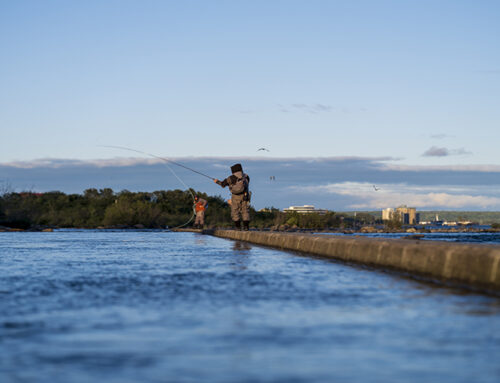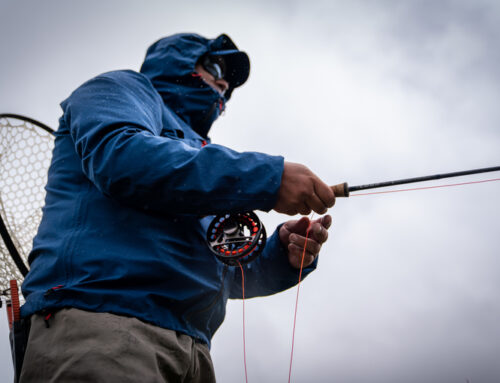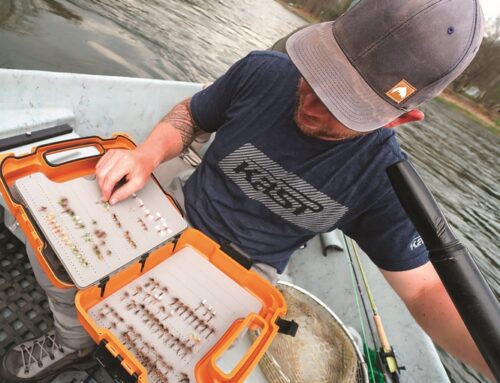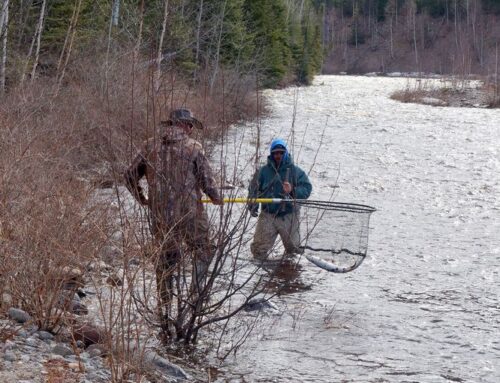
There are two general methods to casting a fly: single hand and two hand. The latter is commonly called Spey casting because it was first used on the River Spey in Scotland.
Why Spey?
A Spey, or two-handed rod, will open up locations — mostly rivers — that would be difficult to fish with a single-hand rod. Because it’s a roll cast and not an overhead cast, you can fish areas that have limited back-casting room. You can also cover more water and greater distances, change directions easier, and have better line control and mending — all with less casting effort.
The biggest mistake anglers make is thinking one method will work in any situation; learning to properly use a two-hand rod is simply another tool in your toolbox.
Spey basics
A Spey cast is basically the same motion as a basic roll cast. Lift the rod and tilt it slightly back. The lower hand, which is holding the butt, will be slightly out front of the body. To make the forward cast, you move the top hand away from you and bring the lower hand in. With roughly the same amount of force, you want the line to unroll over the water, important for casting for distance. If the rod tip follows a straight line to target, you will have a tight loop.
Spey casting variations
Double Spey, snap-T, circle-C, and single Spey are just some of the names you will hear mentioned by Spey casters. Simply put, they are a manipulation of the rod and line prior to the forming roll cast.
These Spey casts are variations for casting off either shoulder or when dealing with the wind and current. Unlike single-hand casting, Spey casters learn to cast off both sides of their body. This may sound difficult, but it isn’t — after some practice.
The Double Spey cast is one of the most important and the first Spey cast you should learn.
The benefits
Spey casting can be a wonderful way to fish. It is only one method, but worth learning. On those days when you might not be able to fish because blowing wind would make it difficult or your location prevents you from making an overhead back cast properly, for example, you can bring out a Spey rod.
When I started Spey casting, the information was very limited. Today, there are numerous videos and books available on the topic. If you’re serious about mastering these techniques, my suggestion is to book time with an instructor.
Spey Gear
Rods: The modern Spey rod trend is 13 feet and under. The shortest of them are called switch rods.
Reels: Spey reels are large with diameters start- ing at 33⁄4 inches to hold longer, thicker Spey lines. Some large single-handed reels can be used for shorter switch rods.
Spey lines: There is a plethora of options on the market. Your best bet is to discuss your needs with knowledgeable staff at a fly shop.
Originally published in the 2021 Fishing Annual of Ontario OUT of DOORS magazine.
To learn more about single-handed casting, click here






Leave A Comment